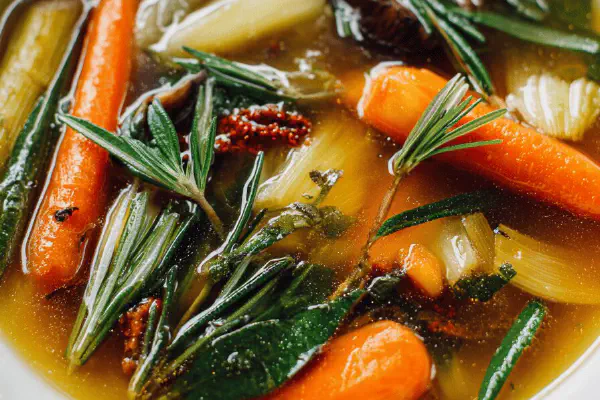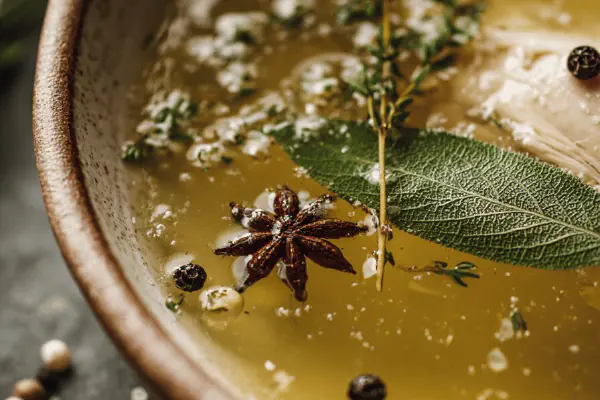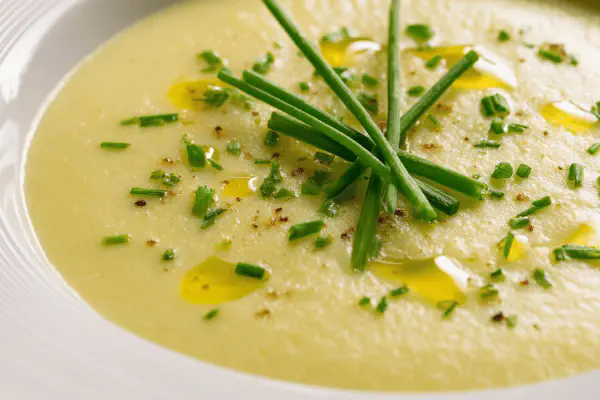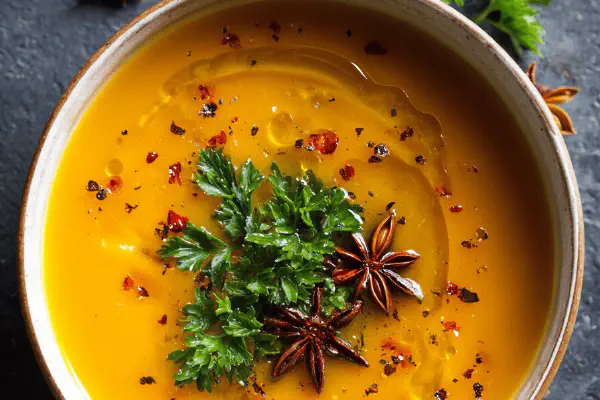Vegetable Broth Remix

By Emma
Certified Culinary Professional
Ingredients
- 3 litres water
- 1 large carrot, unpeeled, sliced into 1 cm thick rounds
- 1 large parsnip, peeled and quartered
- 2 stalks celery, diced roughly
- 3 garlic cloves, crushed but unpeeled
- 1 onion, quartered, skin on
- 1 leek, chopped into 1 cm pieces, cleaned well
- 2 sprigs fresh rosemary instead of thyme
- 2 sprigs fresh oregano instead of parsley
- 1 dried porcini mushroom, soaked and sliced
- 10 ml smoked paprika powder for a smoky nuance
- 4 ml sea salt
About the ingredients
Method
- Start with cold water in a big pot. Toss in all veg and herbs right away. No peeling means added minerals and flavor—don’t fuss over looks. The garlic skin keeps it mellow, try not to smash too hard.
- Turn heat to medium-high until you spot a roiling boil; bubbles spurt and pop, strong aroma fills kitchen. Immediately reduce heat so it simmers with gentle quiet bubbles, not a roar.
- The idea is slow extraction. Listen for sporadic plopping from onion and parsnip; this signals breakdown. Peek after 45 min to smell smoke slowly intertwining with earth and sweetness.
- Simmer uncovered, no lid, for 50-60 minutes. Watch the volume drop visibly by just under half. Surface should show a slight sheen but no scum—if foam appears, skim lightly with a spoon without stirring too much.
- Turn off heat when veggies are soft, strands of leek translucent and tender. You want some resistance, not total mush.
- Pour through a fine sieve or cheesecloth into a clean pot or bowl. Better to do it in two stages—first drain solids, then press gently with a spoon or spatula to extract last drops without cloudiness.
- Discard veggies; they’ve done their job. If broth tastes bland, simmer a few minutes more to concentrate. If too salty, dilute with a splash of water, then reheat to adjust balance.
- Cool slightly before refrigerating or freezing; oil droplets settle to top and can be skimmed off cold to keep broth clear.
- Pro tip: When in a pinch, replace leek with chopped fennel for a subtle licorice note, or throw in a bay leaf if you want complexity. Avoid overcooking or broth turns bitter.
- Keep container covered; broth absorbs odors easily. Pour into ice cube trays for quick flavor bursts in sauces or grains.
Cooking tips
Chef's notes
- 💡 Start from cold water always; hot starts lose aromas. Toss in chunky veg with skins on; minerals keep. Garlic skin on, crush lightly or bitterness sneaks in sharp fast. Big chunks melt slower; texture helps broth body. Expect bubbles to plop, not roar; simmer low and watch volume visibly dropping just under half. No lid keeps flavors concentrated.
- 💡 Foam on surface? Skim gently with spoon, don’t stir or you risk muddled flavors. The sheen means fat or natural oils; keep it, skim cold later if too oily. Press solids carefully through sieve or cheesecloth after straining once, gentle pressure only. Double strain prevents clouding; important for clarity. Pressing too hard traps grit, ruins clean finish.
- 💡 Swap fresh herbs seasonally. Rosemary and oregano bring pine and brightness; thyme and parsley more delicate but can swap if low. Dried porcini over fresh mushrooms; earthier funk with less raw mushroom bite. Smoked paprika surprise adds depth but too much overwhelms; a pinch works better, temper smoky notes subtly.
- 💡 Liquid reduction varies on pot and heat source; eyeball half volume visible not just timer. 50-60 minutes standard but rely on smells and bouncing plop sounds. Onion and parsnip breakdown audible signals. Soft leek translucent but not mushy; some bite remains. Skimming must be light; vigorous stirring ruins bowl clarity and bouquet.
- 💡 Got fennel instead of leek? Use chopped fennel. Adds licorice hint that can brighten base, but no overcooking—turns bitter fast. Bay leaf if complexity needed, but subtle. Salt carefully; balances and extracts flavors but too much kills broth or hides nuances. Dilute and reheat if oversalted. Store covered in fridge; skim off congealed oils top before reuse.
Common questions
Why leave skins on vegetables?
Skins have minerals and flavor that peelings lose. Add earthiness. Scrub dirt well. Avoid stripping to keep broth rich. Peeling reduces depth actually.
What if foam forms while simmering?
Skim lightly with spoon; don’t stir or press. Foam traps impurities but stirring churns broth and dulls taste. If foam returns, skim again. Multiple brief skims better than one big stir.
How to fix too salty broth?
Dilution first; add splash water, reheat gentle. Taste in between additions. Too salty means concentration + salt imbalance. Simmer longer can also reduce saltiness slightly but watch volume.
Best way to store broth?
Cool uncovered first to drop some steam then cover tight. Refrigerate few days or freeze in portions. Oil separates on top when cold; skim or stir before usage. Reheat gently; avoid boiling again.



